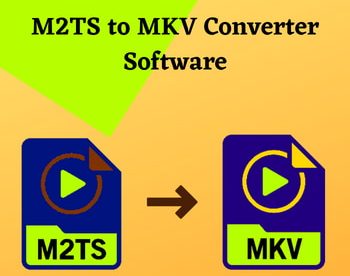16 Best Free Graphics Card Identifier Software For Windows
Here is a list of best free graphics card identifier software for Windows. Using these software, anyone can easily identify which type of graphics card they have in their system. These software come in handy to know various graphics card information including its name, its model, its specification, etc. Most of these software can easily identify graphics cards of all three major companies namely Nvidia, AMD, and Intel. However, there are some software which can only identify graphics cards of only one or two companies.
These software are pretty easy to use as you just need to install them and open their interfaces to view GPU information. Apart from the graphics card, these software can also detect and show you information about other system components like CPU, RAM, System Drive, etc. Plus, some of these software can also be used to monitor the real-time system data like clock speeds, memory speeds, graphics shader speed, etc. Additional features like network monitoring, operating system information, background process monitoring, and more are also present in some software. Go through the list to know more about these graphics card identifier software.
My Favorite Graphics Card Identifier Software for Windows:
GPU-Z is my favorite software because it can easily identify and show graphics card of any company. Plus, it also shows the detailed information of the identified graphics card like name, clock speed, die size, etc.
HWMonitor is another very good graphics card identifier software that can detect a graphics card of any company. In addition to that, it can also be used to monitor the performance of different components of a system.
You can also check out lists of best free GPU Monitoring, CPU Usage Monitor, and CPU Temperature Monitor software for Windows.
GPU-Z
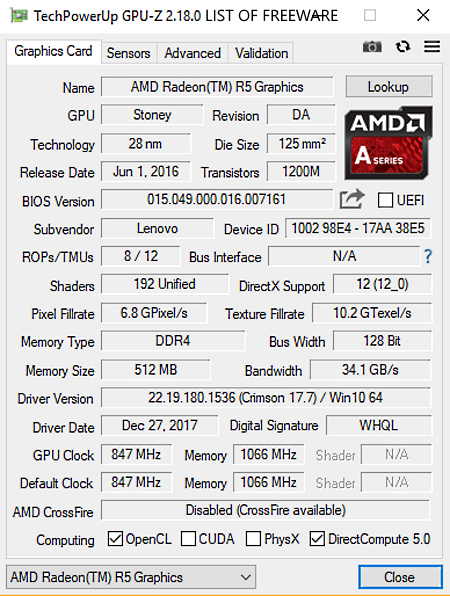
GPU-Z is a free portable graphics card identifier software for Windows. This software can easily detect graphics cards or GPU units of all three major GPU manufacturers namely Nvidia, Intel, and AMD. As soon as you launch this software, it detects the graphics card and shows all its information on the interface. Apart from showing the graphics card information, it also shows the real-time performance data of the graphics card.
Main Features:
- Graphics Card: It is a tab in which you can view GPU manufacturer name, GPU name, GPU die size, number of transistors, fabrication technology (32 nm, 22nm, 14 nm, etc.), number of shaders, pixel fill rate, memory type, bus width, etc.
- Sensor: This tab shows real-time GPU clock speed, memory clock speed, GPU temperature, GPU power consumption, GPU load, and other GPU monitoring data.
Additional Features:
- Advanced: It shows the GPU driver install date and driver name.
- Screenshot: It lets you take the screenshot of its interface that you can save in GIF file format.
Final Thoughts:
It is one of the best free graphics card identifier software because it not only identifies the graphics card name but also shows its entire specification. Additionally, you can monitor GPU performance in real time.
HWMonitor
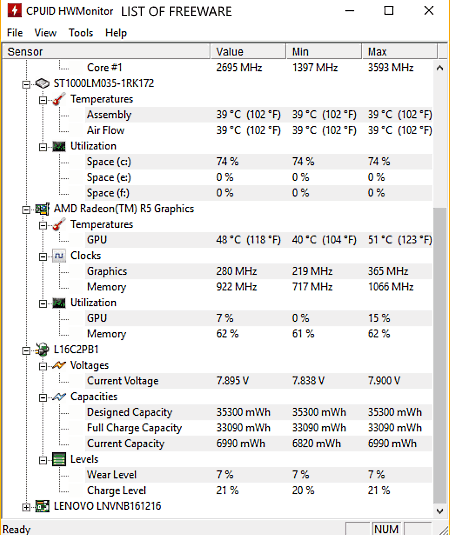
HWMonitor is another free graphics card identifier software for Windows. It is primarily a system performance monitoring software that can also detect and monitor graphics card performance. The good thing about this software is that it can detect graphics cards of Intel, AMD, and Nvidia companies. Plus, all the monitoring data of system components like CPU, Hard Drive, Motherboard, RAM, etc., can also be viewed in it. After viewing the GPU data, you can save it in a TXT file.
Main Features:
- GPU Info: On its main interface, you can view various information about the detected GPU namely manufacturer name, GPU model name, real-time GPU utilization, GPU memory consumption, and system fan speed.
Additional Features:
- Motherboard: It shows the motherboard’s name, voltages at different pins, and temperature.
- CPU: In the case of CPU, this software shows its model name, voltage, CPU fan speed, CPU utilization, and CPU clock speed.
- Hard Drive: It shows the hard drive model name, hard drive utilization, and remaining space in each drive volume.
Final Thoughts:
It is simple and easy to use graphics card identifier through which you can quickly find out all relevant information about the graphics card of a system.
Piriform Speccy
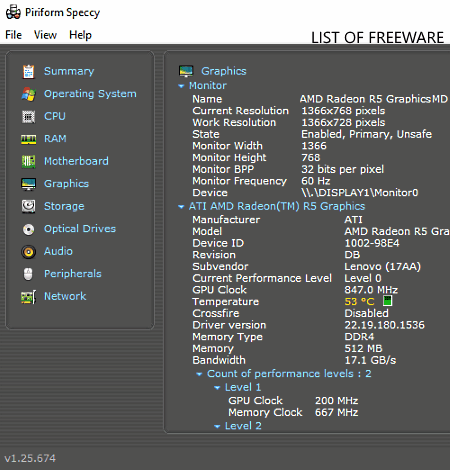
Piriform Speccy is the next free graphics card identifier software for Windows. This software can detect and show specifications and names of many components of a system including the graphics card. As soon as you launch this software, it scans the system and extracts all the important data about different components of a system. You can view all the extracted data from sections like Summary, CPU, RAM, Motherboard, Storage, Graphics, etc. After viewing the data, you can save all the data in a TXT or XML file.
Main Section:
- Graphics: It is the main section of this software in which you can view every small detail about your graphics card. Some of the important graphics card information that you can view in it are GPU manufacturer name, GPU model name, GPU ID, GPU clock, GPU temperature, GPU memory type (GDDR3, GDDR5, etc.), bandwidth, and GPU RAM capacity.
Additional Features:
- CPU: It shows detailed CPU information like CPU name, number of cores, CPU instructions, CPU bus speed, number of threads, etc.
- RAM: In it, you can view total RAM capacity, RAM usage, available virtual RAM, and more information.
- Storage: It provides hard drive manufacturer name, number of heads, number of cylinders, LBA size, capacity, temperature, disk partition space, etc.
- Operating System: It shows details about the OS of a system like OS name, OS serial number, Windows update status, antivirus status, etc.
- Network: It displays the IP address, subnet mask, Wi-Fi API version, available access points count, etc.
- Snapshot: Using it, you can take the snapshots and save them in .speccy format that you can load later.
Final Thoughts:
It is a very good graphics card identifier software because it shows detailed information about your graphics card and other system components.
Open Hardware Monitor
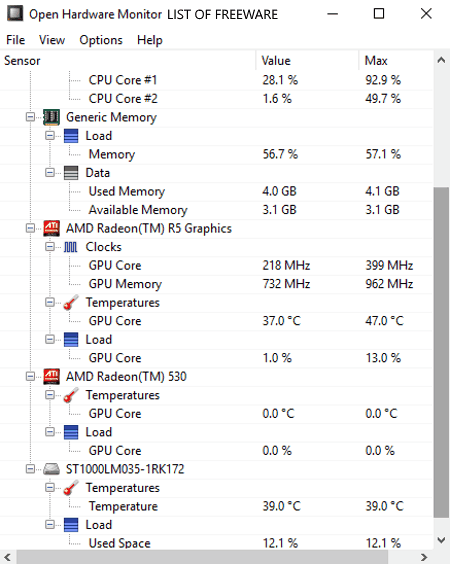
Open Hardware Monitor is yet another free graphics card identifier software for Windows. Using this software, you can easily identify graphics cards of Nvidia and AMD companies. However, you will not be able to detect Intel’s integrated graphics with this software.
Apart from the graphics card, this software can also detect and show information of CPU, RAM, Motherboard, and Hard Drives. Plus, real-time monitoring information of CPU, RAM, and Hard drive is also provided by it. All the monitoring data along with identified graphics card information can be saved in a TXT file using its Save Report option.
Main Features:
- Graphics Card Information: On the main interface, this software shows various information about the identified graphics card namely GPU name, GPU manufacturer, GPU core temperature, and GPU load.
Additional Features:
- CPU: It shows CPUs manufacturer name, CPU clock speed, CPU temperature, CPU load, CPU power consumption, and more related information.
- Motherboard: It displays the motherboard manufacturer name, model number along with motherboard temperature.
- RAM: It shows RAM load, available RAM, and used RAM in real-time.
- Hard Drive: It also shows the hard drive manufacturer’s name, hard drive load, used space, and hard drive temperature.
- Logging Interval: Using it, you can change the system monitoring interval.
Limitations:
This software cannot identify graphics cards of all major graphics card manufacturers.
Final Thoughts:
It is a decent graphics card identifier software that can identify graphics cards and also show system performance data.
CUDA Z

CUDA Z is a free open source graphics card identifier software for Windows, Linux, and MacOS. Using this software, you can easily identify any Nvidia graphics card with ease. However, it cannot be used to identify graphics cards of other companies as it only supports Nvidia graphics cards. Besides identifying graphics card, you can also use it to view the specifications of memory and performance components of your graphics card. This software divides the information about the detected graphics card in three main tabs namely Core, Memory, and Performance.
Main Tabs:
- Core: In this tab, you can view the name of the graphics card, its clock rate, number of multiprocessors, number of threads per block, driver version, etc.
- Memory: It shows graphics card available memory, memory clock speed, bus width, L2 cache size, texture 1D size, and more such memory related information.
- Performance: It shows GPU performance data like Host to Device Speed, Device to Host Speed, Single-Precision Float Speed, Double-Precision Float Speed, etc. In it, you also get a heavy load test mode through which you can test your GPU speed. This tab also contains an Export option through which you can export the performance data in TXT and HTML formats.
Limitations:
This software can only identify Nvidia graphics cards.
Final Thoughts:
It is a decent graphics card identifier software through which you can identify any graphics card model of Nvidia.
PC Wizard
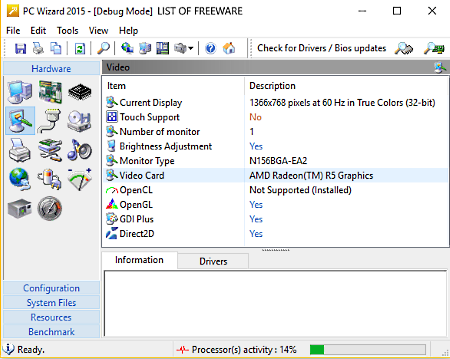
PC Wizard is another free graphics card identifier software for Windows. Using this software, you can easily identify graphics card name and model of all three major graphics card companies namely AMD, Nvidia, and Intel. However, this software does not show other essential data of a graphics card like its clock speed, available memory, processing units, etc.
Apart from identifying the graphics card, this software can also be used to find out the name and companies of other components of a system like CPU, RAM, Storage Drive, Network Card, etc. All the data that this software provides can also be saved in TXT, HTML, RTF, XML, and JSON file formats using the Save as option.
Main Features:
- Video: It is the section in which you can view the exact model and company name of graphics card. It also shows whether your graphics card supports OpenCL, GDI Plus, and Direct2D technologies.
Additional Features:
- Resource Monitor: It shows all the running programs and background processes and how many resources they are consuming.
- Hardware: In it, you can view information about every hardware component of your system like CPU, GPU, RAM, Motherboard, etc.
- System Files: It shows information about all important system files like Config.nt, Autoexnt.bat, System.ini, etc.
- Benchmark: This feature allows you to test your CPU, Memory, Hard Disk, and Graphics Card by running various tests like multithread benchmark, hard disk benchmark, video benchmark, etc.
Final Thoughts:
It is a feature-rich graphics card identifier software through which you can easily identify graphics card along with many other components of your system with ease.
Belarc Advisor
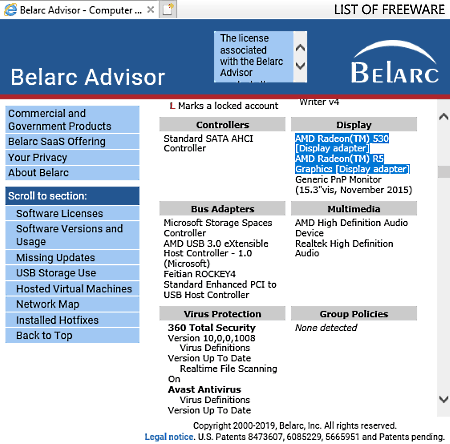
Belarc Advisor is another one of free graphics card identifier software for Windows. Using this software, you can find out all the hardware, software, licensing, network, antivirus status, and other system information.
To extract all the data, this software scans the whole system at the time of installation that takes some time to finish. After finishing the installation, this software shows the generated report about your system in the default web browser. In the Report, you can find the graphics card information under the Display section that shows the graphics card name, graphics card model, and manufacturer name. Apart from that, some information about the monitor is also present under the Display section.
This software does not come with any interface. You just need to install it to quickly generate a detailed report about your system. As this software uses the web browser to open up the report, you can easily save the report in PDF format using the print feature of the web browser.
Limitations:
This software is only free for non-commercial use.
Final Thoughts:
It is a simple and straightforward software through which you can easily find out about your graphics card and other important system software and hardware information.
GPU Shark
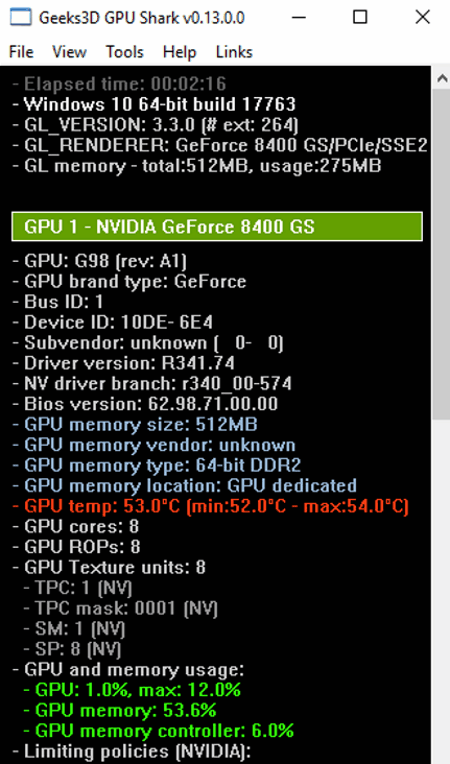
GPU Shark is free portable graphics card identifier software for Windows. It is also a lightweight software that does not consume too much system resources. This software can detect graphics cards of both Nvidia and AMD companies. This software can also detect Intel graphics card. But, it only shows name and model information, unlike other supported graphics cards for which it shows more information.
As soon as you launch this software, you can immediately view the detected graphics card name, its model, total available memory, memory usage, and more information. Apart from graphics card information, it also shows graphics card monitoring data including GPU clock speed, GPU temperature, memory clock speed, voltage, and GPU usage.
Additional Features:
- GPU Memory: In it, you can view detailed information about the GPU memory including dedicated video memory, total available memory, currently available memory, eviction count, and evicted memory.
- View: It allows you to switch between simplified and detailed view. Simplified view only shows basic GPU information including GPU name, GPU temperature, and GPU usage. In the Detailed view, you can view all the information about the detected GPU.
Final Thoughts:
This portable and lightweight software can easily be used to identify graphics card of a system.
SYS Informer
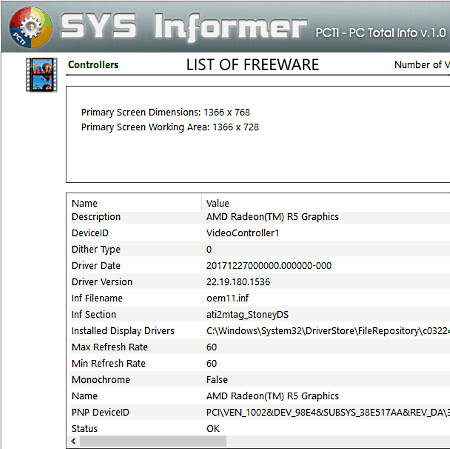
SYS Informer is the next free graphics card identifier software for Windows. Through this software, you can easily view all the system information along with graphics card information. However, it only shows the most basic information about the detected graphics card. Apart from the graphics card, this software also shows information about various hardware and software components of the system.
Main Feature:
- Video: It is a sub-section that you can find under the Hardware section. In it, you can view graphics card name, graphics card manufacturer name, and type of graphics card (internal or external). Besides this, it displays related information like refresh rate, resolution, display driver version, etc.
Additional Features:
- Hardware Information: It is a section in which you can find information about various hardware components like CPU, Hard Drive, RAM, Network Adapters, etc.
- System Information: In it, you can view operating system information like OS version, .NET framework, Product Key, Product ID, etc.
- System Manager: Using it, you can view and manage installed programs, startup programs, running processes, and services.
Final Thoughts:
This is another easy to use graphics card identifier software that anyone can use without much hassle.
ZOTAC Firestorm
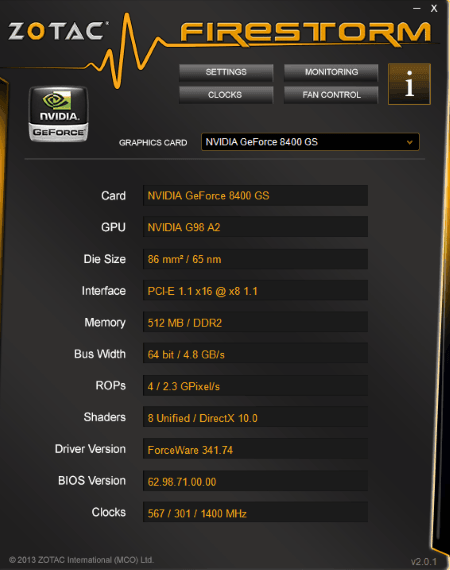
ZOTAC Firestorm is one more free graphics card identifier software for Windows. Through this software, you can easily identify any model of Nvidia graphics card. Apart from Nvidia, it does not detect graphics cards of other companies.
Main Features:
- Information (i): It is the main section of this software that displays graphics card model name, GPU core name, die size, Interface (PCI-E), total memory, bus width, number of shaders, driver version, etc.
Additional Features:
- Monitoring: Using it, you can monitor GPU core clock speed, memory clock speed, shader clock speed, GPU temperature, GPU memory used, and GPU load.
- Fan Control: It lets you change the fan speeds of the graphics card.
- Clocks: It allows you to manually increase or decrease the GPU, Memory, and Shader clock speeds.
Limitations:
Apart from Nvidia, this software cannot detect graphics cards of other companies.
Final Thoughts:
It is another handy graphics card identifier software through which you can identify any Nvidia graphics card.
AMD System Monitor
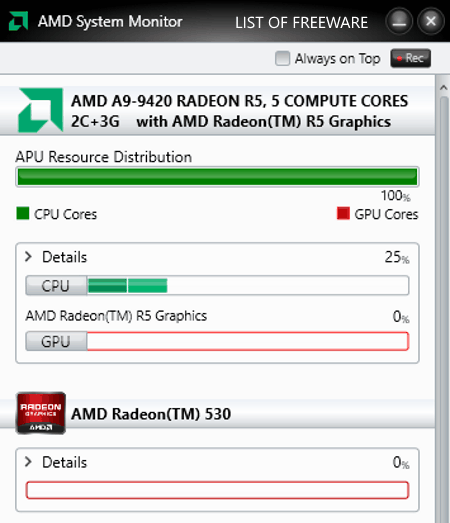
AMD System Monitor is yet another free graphics card identifier software for Windows. Through this software, you can identify AMD graphics card. Other than graphics card, it can also identify and show information of CPU and Memory (RAM) modules. Unlike the graphics card, it can detect and show information about CPU and RAM of any company.
Main Features:
- GPU: On its interface, you can view the GPU model name, manufacturer name, and GPU performance graph showing the clock speed and utilization of the graphics card. However, during my testing, this software was not able to monitor GPU utilization and clock speeds.
Additional Features:
- CPU: In it, you can view CPU model name, real-time CPU utilization graph, frequency, and utilization of individual cores of the CPU.
- Memory: It shows the current memory usage, total available memory, cached memory, reserved memory, etc.
Limitations:
It can only detect graphics cards of AMD company.
Final Thoughts:
It is a very good software to identify the graphics card model of an AMD graphics card. Plus, it can also detect and display CPU and memory information.
HWinfo

HWinfo is the next free graphics card identifier software for Windows. This software can detect and show information about various components of the system like CPU, RAM, Graphics Card, Hard Drive, etc. Besides this, you can also use it to monitor the performance of your system as it shows real-time performance data of various system components.
Main Features:
- System Summary: Inside the system summary section, you can find almost all the important details about GPU, CPU, Memory, and Motherboard. GPU information that you can view in this section are GPU name, GPU manufacturer name, GPU Type (Integrated or external), GPU clock speed, GPU memory speed, and total GPU memory.
Additional Features:
- Sensors: It is a section in which you can view real-time CPU, Memory, GPU, and hard drive performance data like clock speed, memory clock speed, usage, etc.
- Save Report: It lets you save all the monitored data along with system summary in TXT, HTML, XML, and MHTML formats.
- Driver Update: Using it, you can update drivers which are out of date.
- BIOS Update: It allows you to update the BIOS of your system.
Final Thoughts:
It is another free and feature-rich software that can identify graphics card and monitor a lot of system performance data.
Sysinfo Detector
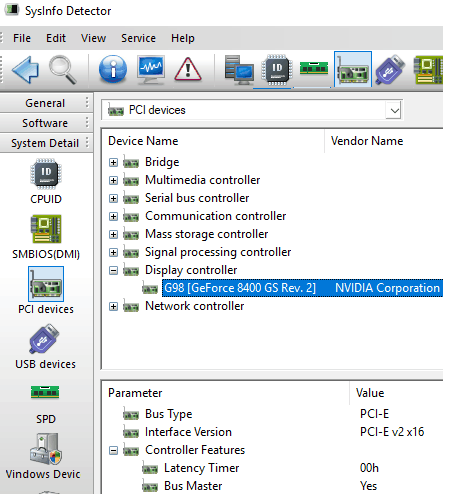
Sysinfo Detector is another free graphics card detector software for Windows. As its name implies, it is primarily a system information detection software that shows all the system information. Along with the name of components, it also shows their internal information like microarchitecture, process technology, physical cores, CPU speed, and more.
Main Features:
- Display Controller: It is the main feature that shows information about the detected graphics card. You can access this feature by going to System Details > PCI devices section. This feature shows the graphics card model, vendor name, GPU bus value, base class, maximum link speed, bus type, etc.
Additional Features:
- System Details: It is a section in which you can view all the main and associated information about CPU, RAM, Storage, etc. Plus, the main graphics card identification feature namely display controller is also present in it.
- Software: In it, you can view various information about the operating system, software license, installed programs, and background processes.
- General: In it, you can view the system summary like installed OS, processor name, motherboard name, hard drive capacity, RAM capacity, etc.
Final Thoughts:
It is yet another free graphics card identifier software that can detect graphics cards of all three main GPU companies namely Intel, AMD, and Nvidia.
CPU-Z
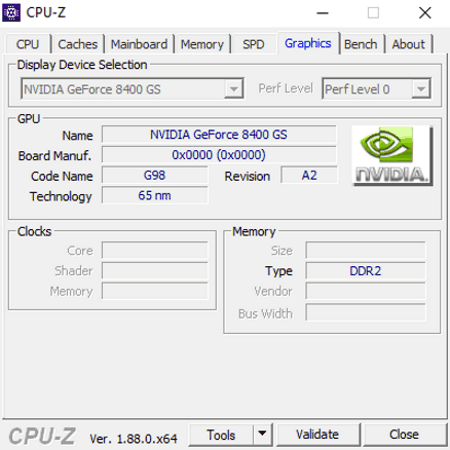
CPU-Z is one more free graphics card identifier software for Windows. It is primarily used to view CPU specifications. However, it also shows information about other important systems components namely Mainboard, Caches, Memory, and Graphics Card. On its interface, you can view various tabs which show information about different components. To view the graphics card information, you only need its Graphics tab. After viewing the information, you can save all the data in TXT and HTML formats.
Main Tab:
- Graphics: It is the main tab in which you can view graphics card name, name of graphics card manufacturer, technology used, GPU core clock speed, memory type, etc.
Additional Tabs:
- CPU: It shows CPU name, CPU code name, max TDP, supported instructions, real-time core clock speed, cache, number of cores, and more CPU information.
- Caches: It shows L1, L2, and L3 cache sizes and their descriptors.
- Mainboard: In it, you can view motherboard model name, manufacturer name, supported chipset, BIOS information, etc.
- Memory: It displays memory type, memory size, channel type, memory frequency, DRAM frequency, etc.
- Bench: Using it, you can test your CPU performance by running the Bench CPU benchmark and CPU stress tests.
Final Thoughts:
It is a straightforward graphics card identifier software that can quickly identify and show you the graphics card information.
Wise System Monitor

Wise System Monitor is a free system monitoring software that can also be used as a graphics card identifier software. Apart from the graphics card, it also shows information of other hardware components. Plus, it is also a very good software for monitoring the running processes of a system. The interface of this software is divided into three main tabs namely Process Monitor, Hardware Monitor, and Operating System. To view the graphics card info, you need to use its Graphics Card section that you can access from the Hardware Monitor Tab.
Main Features:
- Graphics Card: It is a section where you can view the name of the graphics card, graphics card memory, and memory type (DDR4). This software also claims to show engine clock, memory clock, technology, and more information. But during my testing, this software was unable to fetch these information.
Additional Features:
- Process Monitor: It shows all the running processes of your system along with their CPU usage and memory consumption.
- Operating System: In it, you can view standard information about the operating system like product ID, registered user name, install date, version, etc.
Final Thoughts:
It is a beautifully designed graphics card identifier software that easily detects and shows you relevant graphics card information.
System Information Viewer

System Information Viewer is the next free graphics card identifier software on this list. Apart from graphics card, you can also use it to view every small detail about your system hardware. In order to identify the graphics card, you need its GPU status section that you can access from its Status menu.
Main Features:
- GPU Status: Using it, you can view identified graphics card name, number of GPU cores, GPU utilization, shader frequency, GPU core frequency, GPU memory frequency, and more information.
Additional Features:
- CPU Monitoring: It shows real-time CPU usage, CPU utilization, and temperature.
- Network: In it, you can view network information like network usage, network drivers, domain info, server info, network hardware chipsets, etc.
- Volumes: Using it, you can view S.M.A.R.T. data of the hard drive like hard drive temperature, number of sectors, numbers of partitions, partition file type (NTFS, FAT, etc.), etc.
Final Thoughts:
It is another decent software that can also identify and display graphics card of any company. However, its cluttered interface makes it slightly harder to use.
Naveen Kushwaha
Passionate about tech and science, always look for new tech solutions that can help me and others.
About Us
We are the team behind some of the most popular tech blogs, like: I LoveFree Software and Windows 8 Freeware.
More About UsArchives
- May 2024
- April 2024
- March 2024
- February 2024
- January 2024
- December 2023
- November 2023
- October 2023
- September 2023
- August 2023
- July 2023
- June 2023
- May 2023
- April 2023
- March 2023
- February 2023
- January 2023
- December 2022
- November 2022
- October 2022
- September 2022
- August 2022
- July 2022
- June 2022
- May 2022
- April 2022
- March 2022
- February 2022
- January 2022
- December 2021
- November 2021
- October 2021
- September 2021
- August 2021
- July 2021
- June 2021
- May 2021
- April 2021
- March 2021
- February 2021
- January 2021
- December 2020
- November 2020
- October 2020
- September 2020
- August 2020
- July 2020
- June 2020
- May 2020
- April 2020
- March 2020
- February 2020
- January 2020
- December 2019
- November 2019
- October 2019
- September 2019
- August 2019
- July 2019
- June 2019
- May 2019
- April 2019
- March 2019
- February 2019
- January 2019
- December 2018
- November 2018
- October 2018
- September 2018
- August 2018
- July 2018
- June 2018
- May 2018
- April 2018
- March 2018
- February 2018
- January 2018
- December 2017
- November 2017
- October 2017
- September 2017
- August 2017
- July 2017
- June 2017
- May 2017
- April 2017
- March 2017
- February 2017
- January 2017
- December 2016
- November 2016
- October 2016
- September 2016
- August 2016
- July 2016
- June 2016
- May 2016
- April 2016
- March 2016
- February 2016
- January 2016
- December 2015
- November 2015
- October 2015
- September 2015
- August 2015
- July 2015
- June 2015
- May 2015
- April 2015
- March 2015
- February 2015
- January 2015
- December 2014
- November 2014
- October 2014
- September 2014
- August 2014
- July 2014
- June 2014
- May 2014
- April 2014
- March 2014


